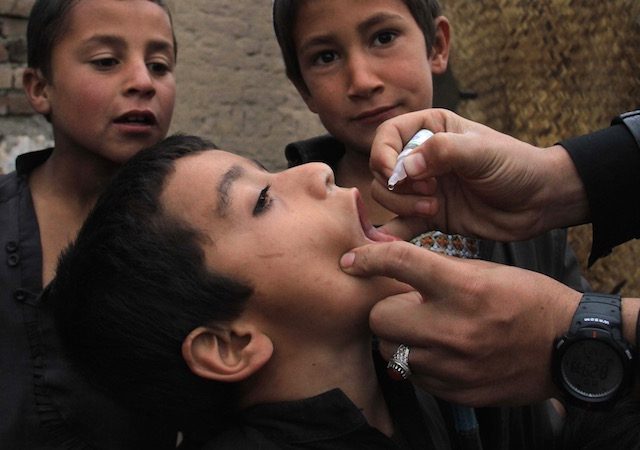SUMMARY
This is AI generated summarization, which may have errors. For context, always refer to the full article.

GENEVA, Switzerland – One-fifth of the world’s children are still not receiving routine life-saving vaccinations and efforts to ensure global immunization coverage remain “far off track,” the World Health Organization said Wednesday, April 22.
Nearly 22 million infants, many living in the world’s poorest countries, missed out in 2013 on the routine vaccine against diphtheria, whooping cough and tetanus (DTP3), WHO said, citing the latest available data.
And nearly half of them are in 3 countries: India, Pakistan and Nigeria.
This is of grave concern, said Jean-Marie Okwo-Bele, head of WHO’s vaccine unit, pointing out that there are still 1.5 million premature deaths due to vaccine preventable diseases each year.”
“Today WHO is calling for the global community to close the immunization gap and the unnecessary disability and deaths caused by the failure to vaccinate,” he told reporters in Geneva ahead of World Immunization Week, which starts Friday, April 24.
The world has made great strides in recent decades in raising immunization rates – from as low as 5% in some countries in the mid-1970s to a global average of 84% in 2013.
And 129 countries boast immunization levels above 90%, with vaccines estimated to save as many as 3 million lives each year.
But Okwo-Bele warned the progress had been “plateauing” in recent years, despite a commitment in 2012 by all WHO members to a plan to ensure all children are immunized.
There are a number of reasons for the lack of progress, including the cost of vaccines, weak health systems and lack of access in poorer countries.
Armed conflicts and insecurity also limit access, as do emergencies like the west African Ebola outbreak, with recent, unverified numbers indicating that immunization levels in Guinea, Liberia and Sierra Leone dropped as much as 30 percent at the height of that crisis, Okwo-Bele said.
Also in developed nations, where coverage is generally high, there are pockets where rates are low, as recently emphasized by measles outbreaks in the United States and other western countries.
Researchers said last month immunization rates as low as 50-86% had made the US outbreak possible.
In wealthier countries the low rates can be due to the fact that many of the deadly diseases being vaccinated against rarely appear, and are no longer feared, allowing complacency to set in.
“The vaccinations are victims of their own success,” said WHO senior health advisor Philippe Duclos.
A number of parents also refuse to vaccinate their children against measles, mumps and rubella, claiming it is responsible for increasing cases of autism – a theory repeatedly disproven by a range of studies.
WHO meanwhile said global immunization coverage varies greatly between different kinds of vaccines, with 84% global coverage for DTP3, polio and measles, but only 14% for rotaviruses, the most common cause of severe diarrheal disease.
“Millions of children remain at risk of illness, disability or death because they are not getting the immunization they need,” it warned. – Rappler.com
Add a comment
How does this make you feel?
There are no comments yet. Add your comment to start the conversation.